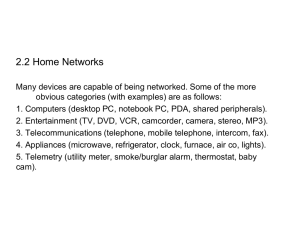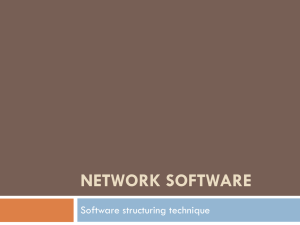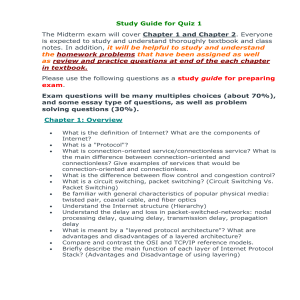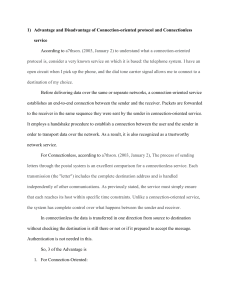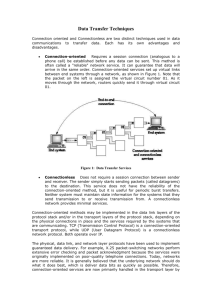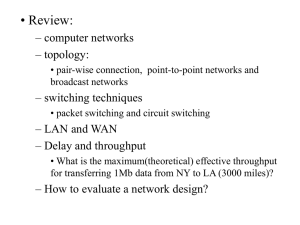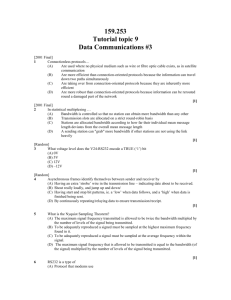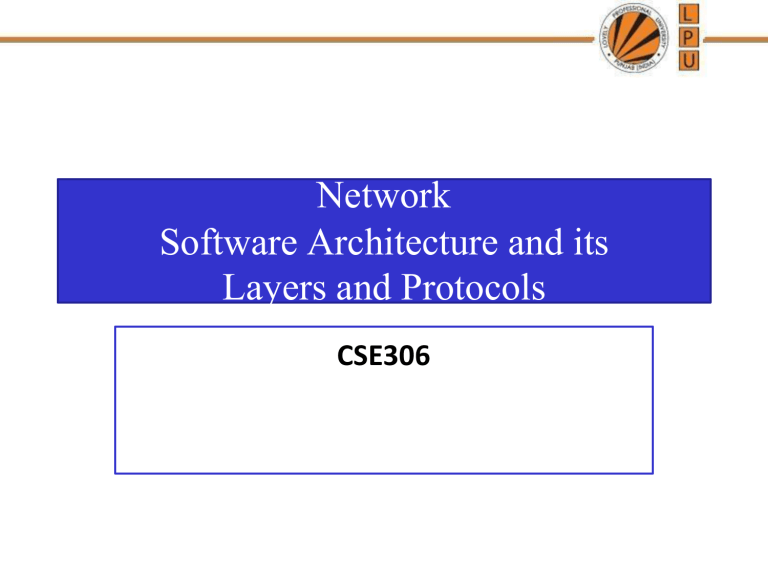
Network Software Architecture and its Layers and Protocols CSE306 Network Software • Protocol Hierarchies • Design Issues for the Layers • Connection-Oriented and Connectionless Services • Service Primitives • The Relationship of Services to Protocols Network Software Protocol Hierarchies • Layers, protocols, and interfaces- Network Architecture • A protocol is an agreement between the communicating parties on how communication is to proceed. • The entities comprising the corresponding layers on different machines are called peers. The peers may be software processes, hardware devices, or even human beings. In other words, it is the peers that communicate by using the protocol to talk to each other. • A list of the protocols used by a certain system, one protocol per layer, is called a protocol stack. Protocol Hierarchies (2) • The philosopher-translator-secretary architecture. Protocol Hierarchies (3) • Example information flow communication in layer 5. supporting virtual Design Issues for the Layers • • • • • • • • • Addressing or naming Error Control Flow Control---Congestion Statistical Multiplexing Routing Scalable QoS---real time Reliability Security Connection-Oriented and Connectionless Services • A circuit is another name for a connection with associated resources, such as a fixed bandwidth. • This dates from the telephone network in which a circuit was a path over copper wire that carried a phone conversation. • In contrast to connection-oriented service, connectionless service is modeled after the postal system. • Each message (letter) carries the full destination address, and each one is routed through the intermediate nodes inside the system independent of all the subsequent messages. • Two Types of switching • Store or forward switching-telecommunication • Cut through switching-High speed networks(fiber channel) • Each kind of service can further be characterized by its reliability. Some services are reliable in the sense that they never lose data. • Usually, a reliable service is implemented by having the receiver acknowledge the receipt of each message so the sender is sure that it arrived. • Reliable connection-oriented service has two minor variations: message sequences and byte streams. • The acknowledgement process introduces overhead and delays, which are often worth it but are sometimes undesirable. • One such application is digitized voice traffic for voice over IP. • Unreliable (meaning not acknowledged) connectionless service is often called datagram service. Connection-Oriented and Connectionless Services • Six different types of service. Service Primitives • Five service primitives for implementing a simple connection-oriented service. Service Primitives (2) • Packets sent in a simple client-server interaction on a connection-oriented network. Services to Protocols Relationship • The relationship between a service and a protocol.
